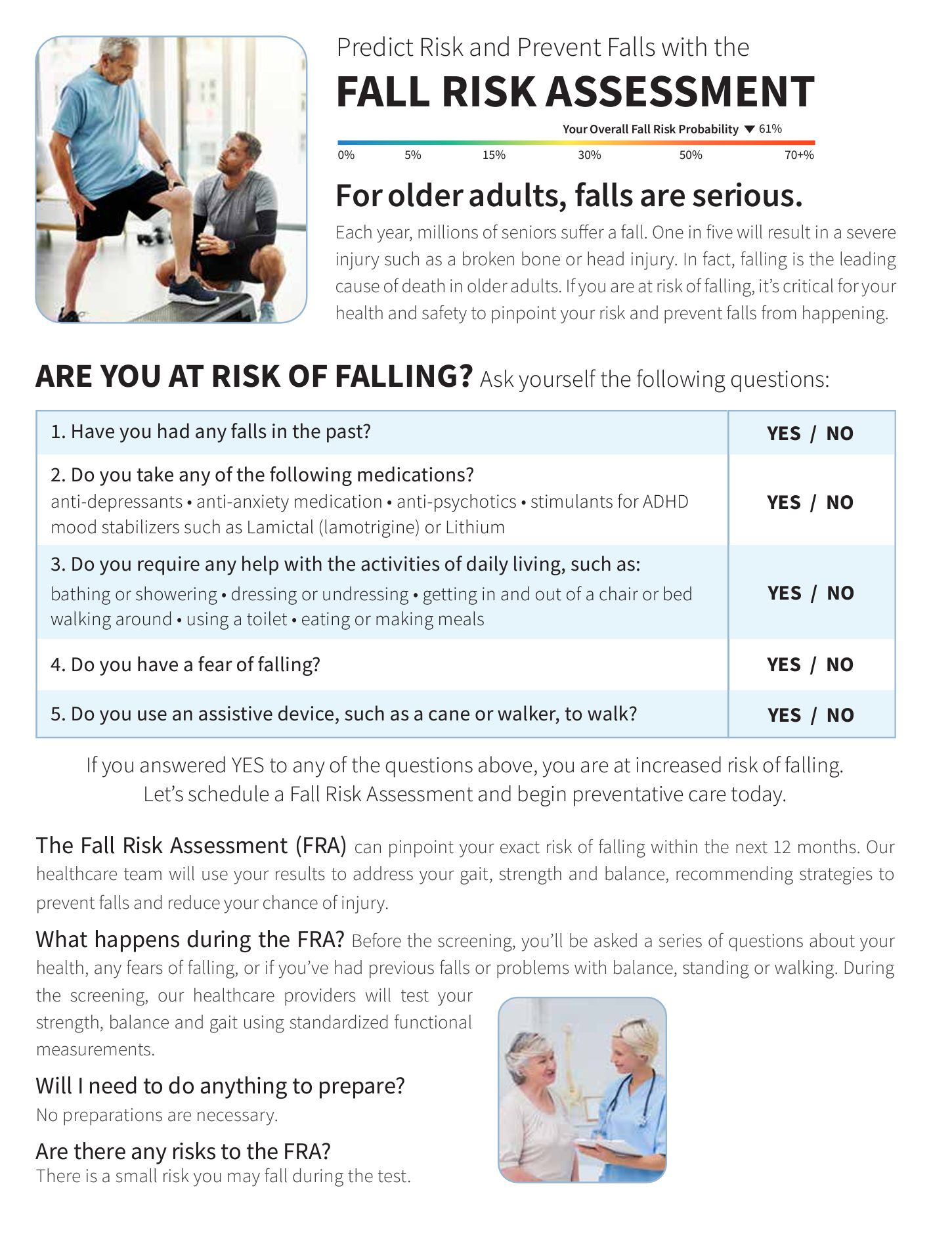The 2-Minute Rule for Dementia Fall Risk
Table of ContentsDementia Fall Risk Can Be Fun For Anyone7 Simple Techniques For Dementia Fall Risk3 Easy Facts About Dementia Fall Risk ShownDementia Fall Risk Fundamentals Explained
A fall danger assessment checks to see just how likely it is that you will drop. The analysis usually includes: This includes a collection of questions regarding your general health and if you've had previous falls or issues with balance, standing, and/or walking.STEADI includes testing, assessing, and intervention. Interventions are suggestions that might lower your threat of falling. STEADI includes three steps: you for your threat of falling for your threat aspects that can be enhanced to try to avoid drops (for instance, balance issues, damaged vision) to lower your risk of falling by making use of efficient methods (as an example, providing education and sources), you may be asked numerous concerns consisting of: Have you dropped in the previous year? Do you really feel unstable when standing or strolling? Are you fretted regarding dropping?, your supplier will examine your strength, balance, and gait, utilizing the following fall analysis tools: This test checks your gait.
If it takes you 12 secs or more, it might imply you are at higher danger for a fall. This examination checks toughness and equilibrium.
The positions will certainly obtain tougher as you go. Stand with your feet side-by-side. Move one foot midway ahead, so the instep is touching the big toe of your various other foot. Relocate one foot completely before the other, so the toes are touching the heel of your various other foot.
How Dementia Fall Risk can Save You Time, Stress, and Money.
Many falls occur as a result of multiple contributing elements; as a result, handling the danger of falling begins with determining the elements that add to drop threat - Dementia Fall Risk. Several of one of the most pertinent danger factors consist of: Background of previous fallsChronic medical conditionsAcute illnessImpaired gait and balance, lower extremity weaknessCognitive impairmentChanges in visionCertain risky medications and polypharmacyEnvironmental elements can also enhance the danger for falls, consisting of: Poor lightingUneven or harmed flooringWet or slippery floorsMissing or harmed handrails and get barsDamaged or improperly equipped tools, such as beds, mobility devices, or walkersImproper usage of assistive devicesInadequate supervision of individuals living in the NF, including those that show hostile behaviorsA effective loss risk administration program calls for a comprehensive medical analysis, with input from all members of the interdisciplinary team

The care strategy ought to additionally include interventions that are system-based, such as those that advertise a secure atmosphere (suitable lights, hand rails, get hold of bars, etc). The performance of the treatments ought to be evaluated regularly, and the care strategy revised as essential to mirror adjustments in the fall threat evaluation. Carrying out a fall danger administration system utilizing evidence-based best method can reduce the frequency of drops in the NF, while limiting the possibility for fall-related injuries.
Facts About Dementia Fall Risk Uncovered
The AGS/BGS guideline advises screening all adults aged 65 years and older for autumn risk every year. This screening consists of asking individuals whether they have fallen 2 or even more times in the past year or sought medical focus for a fall, or, if they have actually not fallen, whether they really feel unsteady when strolling.
Individuals who have fallen when without injury should have their equilibrium and gait reviewed; those with stride or equilibrium problems ought to receive extra evaluation. A history of 1 autumn without injury and without stride or equilibrium issues does not require additional analysis past continued yearly fall risk screening. Dementia Fall Risk. A fall risk assessment is required as part of the Welcome to Medicare examination

Dementia Fall Risk Can Be Fun For Everyone
Documenting a drops background is one of the top quality signs for autumn avoidance and administration. An important part of threat evaluation is a medicine review. Numerous classes of drugs boost fall risk (Table 2). copyright medicines particularly are independent forecasters of drops. These medicines tend to be sedating, change the sensorium, and harm balance and stride.
Postural hypotension can typically be reduced by decreasing the dosage of blood pressurelowering drugs and/or stopping medications that have orthostatic hypotension as a side impact. Use above-the-knee assistance tube and sleeping with the head of the bed elevated might also minimize postural decreases in high blood pressure. The recommended elements of a fall-focused physical evaluation are revealed in Box 1.

A TUG time more than or equal to 12 secs recommends high autumn risk. The 30-Second Chair Stand test assesses reduced extremity toughness and equilibrium. look at this web-site Being incapable to stand from a chair of knee elevation without utilizing one's arms shows raised loss danger. The 4-Stage Balance examination analyzes fixed balance by having the client stand in 4 settings, each progressively more tough.